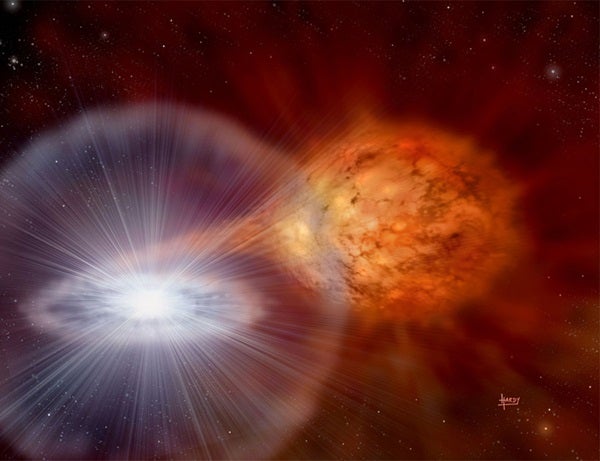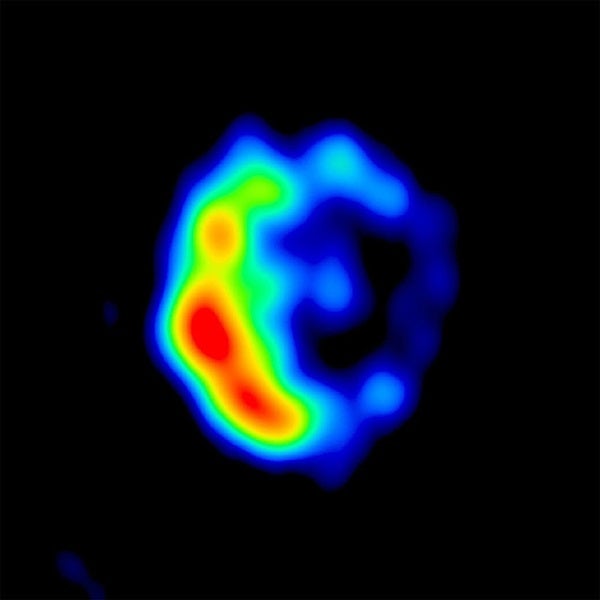Astronomers clocked a blast wave from a nuclear explosion on the surface of a white-dwarf star racing through space at nearly 4 million mph (6 million kilometers per hour). The discovery team of English and German scientists employed a worldwide array of radio telescopes to make the observations.
The explosion was observed February 12 in the binary star system RS Ophiuchi, which comprises a red giant and white dwarf closely orbiting each other. The star flares periodically, every few decades, when enough gas from the red giant builds up on the white dwarf’s surface to cause runaway thermonuclear reactions. In one day, the white dwarf’s energy output increases to more than 100,000 times the Sun’s.
The gas shoots off the white dwarf and crashes into the red giant’s bloated atmosphere. The resulting blast waves accelerate electrons to near light-speed. As the electrons move through the star’s magnetic field, they create radio waves, which earthbound telescopes can detect.
It’s unclear what mechanism is responsible for this change. Astronomers also hope to discover if the white dwarf sheds all its accumulated mass each time it flares or whether the dead star is gradually increasing in size. If so, it will explode as a supernova in the distant future, ending its cyclical outbursts.
The team reports its discovery in the July 20 issue of the journal Nature.











